 William Basinski und Richard Chartier haben schon auf einer Reihe von Veröffentlichungen zusammengearbeitet, zuletzt vor zehn Jahren auf „Divertissement“, das auf Vinyl bei Important Records erschien. Im Titel spielt „Aurora Terminalis“ natürlich auf „Aurora Liminalis“ aus dem Jahr 2013 an, eine weitere Zusammenarbeit der beiden. Weiterlesen
William Basinski und Richard Chartier haben schon auf einer Reihe von Veröffentlichungen zusammengearbeitet, zuletzt vor zehn Jahren auf „Divertissement“, das auf Vinyl bei Important Records erschien. Im Titel spielt „Aurora Terminalis“ natürlich auf „Aurora Liminalis“ aus dem Jahr 2013 an, eine weitere Zusammenarbeit der beiden. Weiterlesen
Schlagwort-Archive: William Basinski
Children of Eidolon: Digitales Album von 400 Lonely Things
Das neue Album “Children of Eidolon” von 400 Lonely Things erscheint in den kommenden Tagen digital bei Room40. Hinter dem Projekt steht mittlerweile allein Craig Varian, der mit diesem Werk eine besondere Wendung in seiner Arbeitsweise markiert: Die Songauswahl stammt laut Liner Notes aus einer umfangreichen Sammlung unveröffentlichter Stücke, die Varian dem Labelgründer Lawrence English überließ. Mit dessen kuratorischem Gespür wurde aus den unterschiedlichsten Aufnahmen ein kohärentes Album geformt – ein Prozess, der Varian überraschte und zugleich inspirierte. Die Musik des Albums entfaltet eine kühle Dröhnung, hinter der sich eine subtile Emotionalität verbirgt. Weiterlesen
Weiterlesen
William Basinski in der Betonhalle des Berliner Silent Green
Am 16. April wird der amerikanische Avantgardekomponist William Basinski die Betonhalle des Berliner Silent Green mit seiner unverwechselbaren Klangkunst erfüllen. Im Rahmen einer kleinen Tour wird er zudem in Barcelona, Warschau, Paris und London zu sehen sein. Basinski, bekannt als Meister der Vergänglichkeit in musikalischer Form, erschafft Werke, die das Vergehen der Zeit zugleich thematisieren und transzendieren. Bekannt wurde Basinski u.a. durch sein Album “The Disintegration Loops”, das den Zerfall alter Tonbänder als zentrales Element aufnimmt und so den Verfall selbst zum ästhetischen Prozess erhebt.  Weiterlesen
Weiterlesen
September 23rd: Archivmaterial von William Basinski
Am 23. September veröffentlicht William Basinski im Rahmen seiner neuen Arcadia Archive-Serie ein Album mit kürzlich entdecktem Material, das ursprünglich in Brooklyn am 23. September 1982 aufgenommen wurde.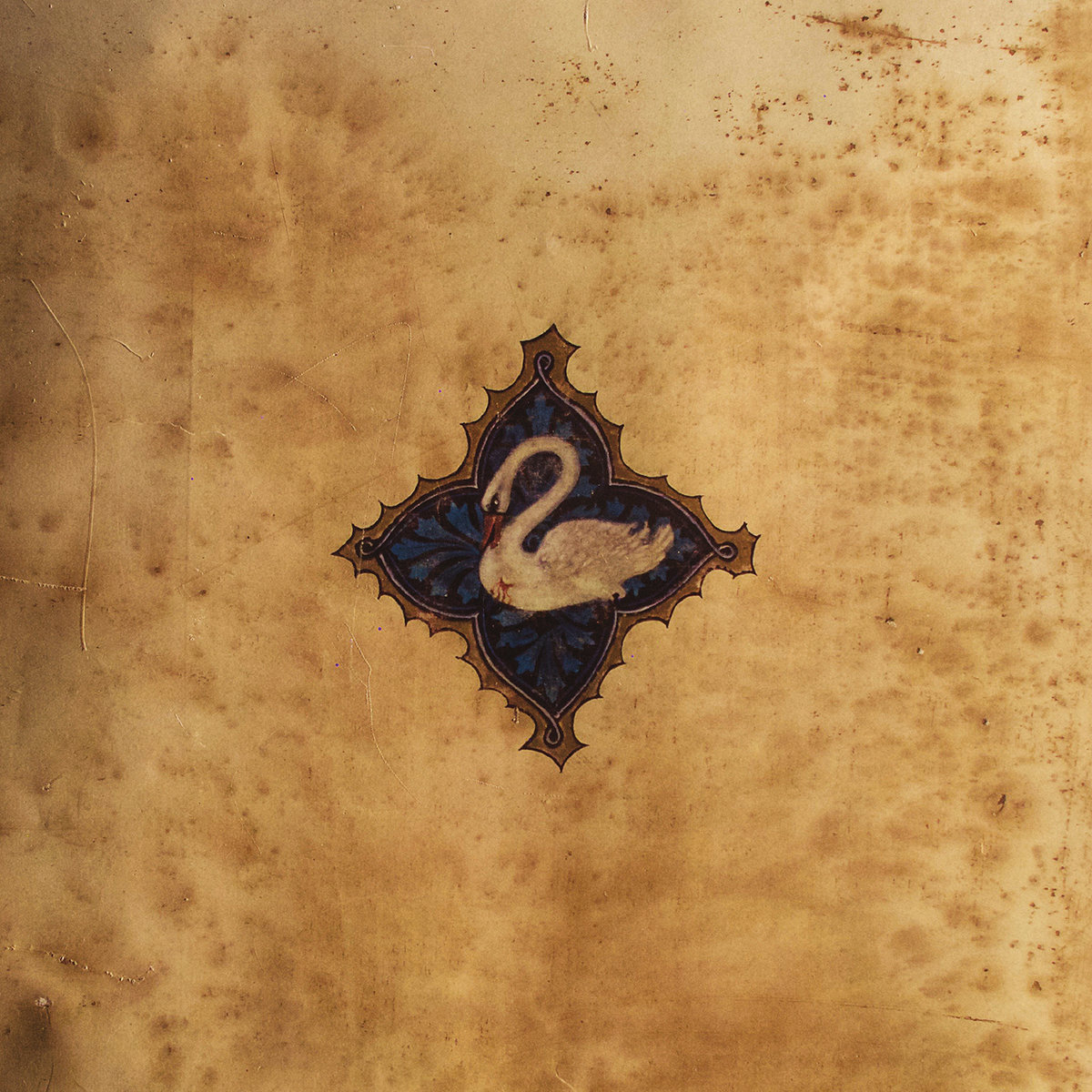 Weiterlesen
Weiterlesen
William Basinski und CEM in der Berliner Volksbühne
Im Rahmen einer kleinen Europatour tritt William Basinski am 12. Juni in der Berliner Volksbühne auf und präsentiert eine seiner seit vergangenen Herbst an verschiedenen Orten aufgeführten Shows unter dem Titel The Last Symphony. “William Basinski ist ein klassisch ausgebildeter Musiker und Komponist, der seit über 30 Jahren mit experimentellen Medien arbeitet”, heißt es im Programtext. “Mit verschiedenen Technologien und analogen Tonbandschleifen erforscht er in seinen eindringlichen und melancholischen Klanglandschaften die zeitliche Natur des Lebens”. Auf unseren Seiten hieß  Weiterlesen
Weiterlesen
The Clocktower At The Beach (1979): Archivaufnahmen von William Basinski auf LINE
Am 3. März erscheint auf Richard Chartiers Label LINE eine 42-minütige Aufnahme, die William Basinski 1979 machte. “The Clocktower At The Beach” ist ein mysteriös klingendes Stück – das Label spricht davon, es handele sich um eine von Basinksis „unheimlichsten“ Aufnahmen -, bei der der Norelco Continental-Bandmaschine eine tragende Rolle zukam. Basinski meint, dass er hier endlich dazu motiviert wurde, lange Stücke aufzunehmen.
WILLIAM BASINSKI / JANEK SCHAEFER: „…on reflection“
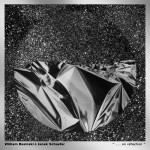 Seit Alben von William Basinski auf diesen Seiten besprochen worden sind, war ein sich durch die Texte ziehendes Element die These, dass die Arbeiten des Wahlkaliforniers (auch immer) Reflexionen über das Vergehen der Zeit waren: „Seine Alben sind in ihrer oft zyklischen Struktur vielleicht auch Versuche die Zeit anzuhalten, selbst wenn das natürlich nicht gelingen kann. Weiterlesen
Seit Alben von William Basinski auf diesen Seiten besprochen worden sind, war ein sich durch die Texte ziehendes Element die These, dass die Arbeiten des Wahlkaliforniers (auch immer) Reflexionen über das Vergehen der Zeit waren: „Seine Alben sind in ihrer oft zyklischen Struktur vielleicht auch Versuche die Zeit anzuhalten, selbst wenn das natürlich nicht gelingen kann. Weiterlesen
Archivaufnahmen von William Basinski: Music for Abandoned Airports: Tegel
Nach dem Doppelalbum „Lamentations“, das nicht nur auf diesen Seiten für Begeisterung sorgte – „eines der ergreifendsten Alben des Jahres 2020“, hieß es hier-, veröffentlicht William Basinski nach einem „deep dive“ in seinen Archiven Aufnahmen aus dem Jahr 1998: „Music for Abandoned Airports: Tegel“ ist, wie der Titel schon erahnen lässt, beeinflusst von Brian Eno: „someone who inspired me greatly at a tender age. Thank you Maestro.“
WILLIAM BASINSKI: Lamentations
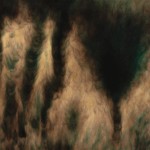 Jüngst vom Wire noch als „the most influential ambient musician of the last 20 years“ geadelt, veröffentlicht der seit etlichen Jahren in Los Angeles lebende Basinski nach dem in diesem Jahr erschienenen und ursprünglich zwischen 1989 und 1991 aufgenommenen Songzyklus „Hymns Of Oblivion“ und einer Liveaufnahme mit Richard Chartier ein neues Album; wobei neu, wie sehr häufig bei Basinski, immer relativ ist, basieren die Stücke auf “Lamentations” doch wieder auf jahrzehntealten Tapeloops aus seinem schier unerschöpflichen Archiv. Weiterlesen
Jüngst vom Wire noch als „the most influential ambient musician of the last 20 years“ geadelt, veröffentlicht der seit etlichen Jahren in Los Angeles lebende Basinski nach dem in diesem Jahr erschienenen und ursprünglich zwischen 1989 und 1991 aufgenommenen Songzyklus „Hymns Of Oblivion“ und einer Liveaufnahme mit Richard Chartier ein neues Album; wobei neu, wie sehr häufig bei Basinski, immer relativ ist, basieren die Stücke auf “Lamentations” doch wieder auf jahrzehntealten Tapeloops aus seinem schier unerschöpflichen Archiv. Weiterlesen
Lamentations: Neues Studioalbum von William Basinski
Im November erscheint mit „Lamentations“ ein neues Studioalbum von William Basinski auf Temporary Residence. 2020 hatte Basinksi bereits den in den späten 80ern/frühen 90ern aufgenommenen Songzyklus „Hymns Of Oblivion“ veröffentlicht. Zuletzt war noch unter dem Titel „Something From The Pink House“ eine zusammen mit Richard Chartier einsgepielte Liveaufnahme herausgekommen. „Lamentations“, auf dem 12 Stücke enthalten sind und das wieder auf teilweise jahrzehntealten Tapeloops aus Basinkis schier unerschöpflichem Archiv basiert, wird beschrieben als “over 40 years of mournful sighs meticulously crafted into songs”. Einen ersten Eindruck bekommt man durch das Stück „O, my daughter, o, my sorrow“ und hier scheint es tatsächlich so zu sein, dass es Basinski gelingt “operatic tragedy into abyssal beauty” zu transformieren.
Neue Veröffentlichung von William Basinski und Richard Chartier
William Basinski hat in den vergangenen Jahren mehrfach mit Richard Chartier zusammengearbeitet. Jüngst wurde unter dem Titel „Something From The Pink House“ exklusiv bei Bandcamp eine 2004 entstandene Liveaufnahme als Download veröffentlicht. Von Basinski selbst als „archival oddity“ tituliert, fand diese Liveimprovisation im Haus von Basinskis Partner James Elaine statt. Teile des Materials wurden später für das 2013 veröffentlichte Album „Aurora Liminalis“ verwendet.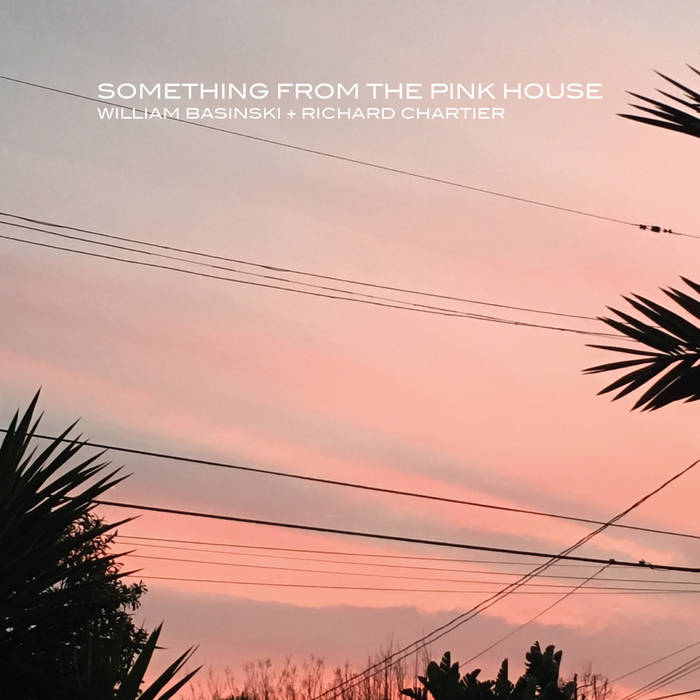 Weiterlesen
Weiterlesen
WILLIAM BASINSKI: Hymns Of Oblivion
 Als 2006 „Not Alone“, die umfangreiche von Mark Logan und David Tibet kuratierte 5CD-Box, deren Erlös den Ärzten ohne Grenzen zukam, veröffentlicht wurde, fand sich auch ein exklusives Stück William Basinskis, was allerdings aus dem restlichen damals bekannten Werk herausstach. Nicht unbedingt wegen seiner Länge respektive Kürze, denn obwohl Basinski tendenziell die Langform vorzieht und Weiterlesen
Als 2006 „Not Alone“, die umfangreiche von Mark Logan und David Tibet kuratierte 5CD-Box, deren Erlös den Ärzten ohne Grenzen zukam, veröffentlicht wurde, fand sich auch ein exklusives Stück William Basinskis, was allerdings aus dem restlichen damals bekannten Werk herausstach. Nicht unbedingt wegen seiner Länge respektive Kürze, denn obwohl Basinski tendenziell die Langform vorzieht und Weiterlesen
WILLIAM BASINSKI: On Time Out Of Time
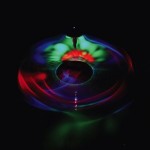 Letztlich sind fast alle Arbeiten William Basinskis Auseinandersetzungen mit (dem Wesen) der Zeit. Was die Zeit alles zersetzen kann, spielte eine zentrale Rolle in Basinskis wohl bekanntestem und inzwischen auch schon mehrfach orchestral aufgeführten Werk „The Disintegration Loops“ und auch der Titel seiner Bowiehommage machte dies deutlich. Weiterlesen
Letztlich sind fast alle Arbeiten William Basinskis Auseinandersetzungen mit (dem Wesen) der Zeit. Was die Zeit alles zersetzen kann, spielte eine zentrale Rolle in Basinskis wohl bekanntestem und inzwischen auch schon mehrfach orchestral aufgeführten Werk „The Disintegration Loops“ und auch der Titel seiner Bowiehommage machte dies deutlich. Weiterlesen
William Basinski / Lawrence English / Marta de Pascalis im HAU, Berlin
Im Herbst brachten William Basinski und Lawrence English ihr erstes gemeinsames Album “Selva Obscura” (Temporary Residence) heraus, mit dem sie in Anlehnung an Dante Formen der Melancholie in subtilen, verrauschten Klangflächen erforschten. Weiterlesen
Weiterlesen
WILLIAM BASINSKI / LAWRENCE ENGLISH: Selva Oscura
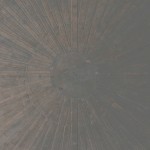 Mit vielen seiner Veröffentlichungen hat William Basinski die Grenzen von alten Arbeiten und neuen Kompositionen verwischt. Sein extensives Archiv mit Tapeloops aus den frühen 80ern dient ihm immer wieder als Klangmaterial für seine Kompositionen (zuletzt noch auf seiner Hommage an David Bowie). Keine seine Arbeiten hat mehr Resonanz erfahren als die vier Teile von „The Disintegration Loops“, die es inzwschen sogar bis ins New Yorker 9/11-Memorial geschafft haben. Weiterlesen
Mit vielen seiner Veröffentlichungen hat William Basinski die Grenzen von alten Arbeiten und neuen Kompositionen verwischt. Sein extensives Archiv mit Tapeloops aus den frühen 80ern dient ihm immer wieder als Klangmaterial für seine Kompositionen (zuletzt noch auf seiner Hommage an David Bowie). Keine seine Arbeiten hat mehr Resonanz erfahren als die vier Teile von „The Disintegration Loops“, die es inzwschen sogar bis ins New Yorker 9/11-Memorial geschafft haben. Weiterlesen
Metzger Therapie presents: William Basinski und Marta Zapparoli am 15. November im Acud Macht Neu, Berlin
Nach zwei gut besuchten Auftritten Ende Mai im Hangar 49 wird William Basinski am Mittwoch, den 15.11. erneut in Berlin auftreten – diesmal im ACUD Macht Neu und mit der in Soundkünstlerin Marta Zapparoli als Support Act.  Weiterlesen
Weiterlesen
WILLIAM BASINSKI: A Shadow in Time
 In einem anlässlich der Veröffentlichung von Christoph Ransmayrs neuem Romans über den „Lauf der Zeit“ gemachten Interviews versucht der Journalist fortwährend dem Autoren Sätze zu entlocken, dass das Erzählen über den Lauf der Zeit triumphieren kann – einem Wunsch, dem der Österreicher nicht nachkommt: „Wenn seine [des Erzählers] Gehirnströme erlöschen, zum Stillstand kommen, und sein Herzschlag, dann ist das Spiel natürlich auch für ihn zu Ende und von einem Triumph dann noch zu reden, wäre lächerlich.“ Weiterlesen
In einem anlässlich der Veröffentlichung von Christoph Ransmayrs neuem Romans über den „Lauf der Zeit“ gemachten Interviews versucht der Journalist fortwährend dem Autoren Sätze zu entlocken, dass das Erzählen über den Lauf der Zeit triumphieren kann – einem Wunsch, dem der Österreicher nicht nachkommt: „Wenn seine [des Erzählers] Gehirnströme erlöschen, zum Stillstand kommen, und sein Herzschlag, dann ist das Spiel natürlich auch für ihn zu Ende und von einem Triumph dann noch zu reden, wäre lächerlich.“ Weiterlesen
William Basinski zusammen mit Daimon und Skrei am 21. und 22 Mai in Berlin
Im Rahmen des vom gleichnamigen Label kuratierten Metzger Therapie-Festivals wird William Basinski am 21. und am 22. Mai jeweils im Berliner Hangar 49 zu sehen sein. Im Vorprogramm spielen die Acts Skrei und Daimon – letzerer, zu denen neben Paolo Monti und Nicola Quiriconi auch Simon Ballestrazzi (u.a. T.A.C.) zählt, stellen bei der Gelegenheit ihr Debüt-Album vor.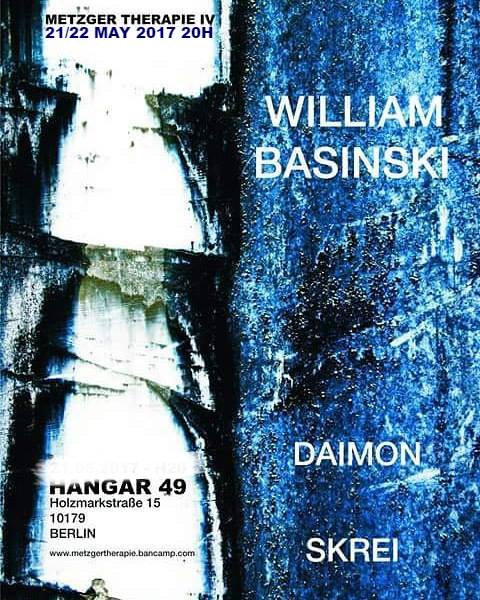 Weiterlesen
Weiterlesen
WILLIAM BASINSKI: Nocturnes
 Fast immer sind William Basinskis Arbeiten (auch) Meditationen über das Wesen der Zeit und der Vergänglichkeit, die dem Hörer aber – zumindest für die Dauer der jeweiligen Komposition – das Gefühl geben aufgehoben, der Tyrannei der Zeit entzogen und entrissen zu sein – trotz oder gerade wegen des melancholischen Charakters der Musik. Etwas, das dem inzwischen in Los Angeles ansässigen Basinski mit „Nocturnes“ erneut gelingt. Weiterlesen
Fast immer sind William Basinskis Arbeiten (auch) Meditationen über das Wesen der Zeit und der Vergänglichkeit, die dem Hörer aber – zumindest für die Dauer der jeweiligen Komposition – das Gefühl geben aufgehoben, der Tyrannei der Zeit entzogen und entrissen zu sein – trotz oder gerade wegen des melancholischen Charakters der Musik. Etwas, das dem inzwischen in Los Angeles ansässigen Basinski mit „Nocturnes“ erneut gelingt. Weiterlesen



